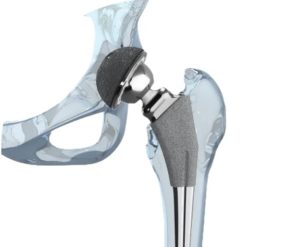Auto manufacturers should develop technology that will keep drivers from being distracted by the devices built into their vehicles, according to proposals issued Thursday by the federal government.
“The proposed voluntary guidelines would apply to communications, entertainment, information gathering and navigation devices or functions that are not required to safely operate the vehicle,” according to a press release from the National Highway Traffic Safety Administration.
In other words, car companies ought to install gadgets that won’t let people engage in dangerous activities such as text-messaging, surfing the ’Net, reading their electronic newspaper, chit-chatting on Facebook, or Tweeting. Drivers wouldn’t be able to dial the phone or type on a GPS to enter an address they might never make it to if their typing takes their eyes off the road and causes a crash.
U.S. Department of Transportation
“Distracted driving is a dangerous and deadly habit on America’s roadways – that’s why I’ve made it a priority to encourage people to stay focused behind the wheel,” said U.S. Transportation Secretary Ray LaHood. “These guidelines are a major step forward in identifying real solutions to tackle the issue of distracted driving for drivers of all ages.”
The NHTSA, which is part of the U.S. Department of Transportation, is working on a three-phase, distracted-driving project. The first phase is aimed at “in-vehicle” systems, while Phase II would address the use of portable personal devices like smart phones, electronic readers like iPads and Kindles, and portable GPS’s. A third phase may address voice-activated controls to minimize electronic distractions.
The NHTSA proposals don’t go as far to prevent distracted driving as the recommendation made last month by the National Transportation Safety Board, a federal advisory group. That board recommends a full nationwide ban on all cell-phone use by drivers except in emergency situations – and includes a ban on the use of hands-free devices, a significantly stronger restriction.
The proposed Phase I distraction guidelines include recommendations to:
- Reduce complexity and task length required by the device;
- Limit device operation to one hand only (leaving the other hand to remain on the steering wheel to control the vehicle);
- Limit individual off-road glances required for device operation to no more than two seconds in duration;
- Limit unnecessary visual information in the driver’s field of view;
- Limit the amount of manual inputs required for device operation.
A second category of recommendations is more interesting. It addresses restrictions, rather than convenience or ease of use:
The proposed guidelines would also recommend the disabling of the following operations by in-vehicle electronic devices while driving, unless the devices are intended for use by passengers and cannot reasonably be accessed or seen by the driver, or unless the vehicle is stopped and the transmission shift lever is in park.
- Visual-manual text messaging;
- Visual-manual internet browsing;
- Visual-manual social media browsing;
- Visual-manual navigation system destination entry by address;
- Visual-manual 10-digit phone dialing;
- Displaying to the driver more than 30 characters of text unrelated to the driving task.
The NHTSA guidelines, as well as the proposed ban on hands-free cell use, are already drawing misguided wails of complaint about the interference of the “nanny-state.”
“I cant believe (sic) how some of you idiots are so willing to give up your freedoms for what you think will keep you safe,” said a commenter on LaHood’s Facebook page. In a newspaper article, an Arizona state representative argued, “This call for action from the NTSB is too far reaching and goes beyond practical common sense … To think that we will be able to eliminate any and all types of distractions while driving is not reasonable.”
And during a New York state Senate hearing on the issue Monday, the discussion turned onto a typically off-topic track, as one legislator described how the activity of drinking coffee and eating a sandwich while driving is more distracting than using a phone.
Of course, laws can’t eliminate all risks on our highways. But laws to prevent distracted driving, just like laws against drunken driving and speeding, do make common sense.
And will save lives.










3 Comments
Thomas Taylor
A good start, but it might be a long journey. People love their cell-phone-talking while driving. I bought a Bluetooth ear bud, and thought I was all set with hands-free, but truthfully the thing still made me nervous. I could tell I was still being distracted, more so that by any conversation with a passenger. I wonder whether there is any research out there that explains why talking on the phone is more distracting, even when hands-free?
Deb
In response to Thomas Taylor's question, yes, we have written white paper that explains why talking on the phone is more distracting even when hands-free. It discusses the research about cognitive distraction. You can download the paper (it's free) at http://thebrain.nsc.org.
Montebello
It seems like the more advanced our cars get and the more technology and internet connectivity they get the more devices and doodads for the government to regulate. Regulation is good to a certain extent but I think some drivers will find a way around them.
Comments for this article are closed.